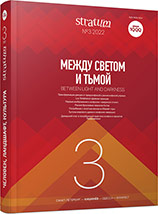Зеркало в погребальном обряде ранних кочевников Южного Урала: маркер гендера или статуса, предмет культа или быта?
Mirrors in the Funerary Rite of the Early Nomads in the Southern Urals: a Marker of Gender or Status, a Cultic Object or an Everyday Life Artefact?
Author(s): Natalia A. BersenevaSubject(s): History, Archaeology, Social history
Published by: Издательский дом Stratum, Университет «Высшая антропологическая школа»
Keywords: Southern Urals; Early Iron Age; early nomads; kurgans; mirrors; cultic artefacts
Summary/Abstract: Metal (presumably bronze) mirrors are rather numerous in the early nomadic burials. This study pursues two goals: (1) analysis of burials with mirrors based on the representative data base from the Southern Ural area (the end of the 6th—2nd centuries BCE) and (2) interpretation of symbolism related to mirrors in the mortuary context. The sample consists of 90 anthropologically identified undisturbed burials with mirrors. Of these, 75 burials belonged to females (83.3 %), 11 — to males (12.2 %) and 4 — to sub-adults (4.5 %). The author has analyzed the distribution of objects according to age/gender groups and the correlation between mirrors and other grave goods (ornaments, weapons and cultic items). As a result, we can conclude that mirrors are artifacts of complex symbolism, being objects of everyday life, vertical status and cult, at the same time. It can be confirmed by their position near the head or to the right of the body, the finds of precious and rare mirrors, as well as the location of mirrors in complexes of various objects of cult.
Journal: Stratum plus. Археология и культурная антропология
- Issue Year: 2022
- Issue No: 3
- Page Range: 159-170
- Page Count: 12
- Language: Russian
- Content File-PDF

